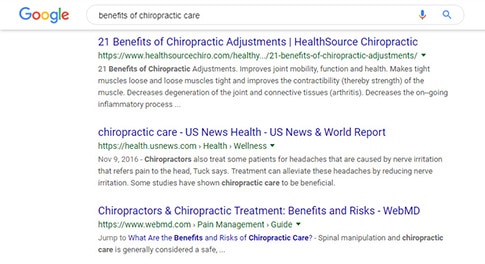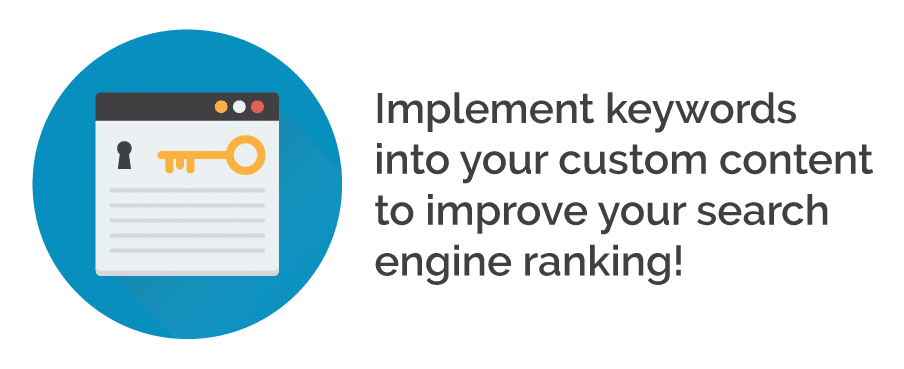How to Turn Website Visits Into Office Visits
In our recent webinar, How to Appear Multiple Times on Google’s First Page, we taught you how to increase your search engine ranking and boost visibility to new clients. However, the work doesn’t stop there. Once you get interested web visitors onto your site, how do you turn them into clients at your practice?
To help you learn how to do this and more, we decided to follow up our last presentation with a new webinar, How to Turn Web Visits Into Office Visits: Using Your Website to Convert More Patients. In this educational webinar, we cover everything from building an optimized website to creating an effective PPC landing page so that you can glean the most from your professional website.
Let’s take a look at some of the highlights from the webinar and go over the most important elements for your healthcare marketing strategy.
Why You Need a Professional Website
People no longer need to open a thick yellow book or rely on recommendations from friends to find a business like yours. Instead, they take to Google to search for the products and services they need. In fact, about 97% of people open their browsers to find a local business. Without a website, you could lose out on these potential clients surfing the web.
Think of your website as a digital representation of your practice. It tells web users what your practice does, what kind of services you offer, and what sets you apart from your competitors. Between high-quality photos of your staff and regularly updated content, potential clients will be able to trust your practice before they even pick up the phone to call your office.
A thoughtfully designed, optimized website can help turn an interested click into a long-term client if you know the best practices for your industry. Next, let’s take a glimpse at what strategies will help you create the best professional website for your practice.
Optimize Your Website
Earn a better Google ranking and increase web traffic by optimizing your website. In marketing, optimization is simply the practice of making something as effective as it can be. In this case, that something is your website! To ensure that your website is performing to the best of its abilities, you need to keep both Google’s algorithm and your audience in mind.
Google’s search engine algorithm determines which pages rank for which search queries and organizes those results on SERPs (search engine results pages). Google reportedly employs over 200 ranking factors to decide which websites take the top spots on SERPs. While many of those factors remain a mystery under lock and key at the Google headquarters, we do know enough to make an impact on your website’s ranking.
Top Google ranking factors include:
1. Keywords – Keywords and phrases are used to tell Google’s algorithm and web users what your content is about. Implementing keywords enhances your site’s discoverability by signaling to the algorithm that your content is useful to relevant search queries.

2. Page Speed – Most web users expect your site to load in 2 seconds or less! Not only do fast loading times appeal to your audience, they also appeal to the algorithm. Slow page speed can contribute to a high bounce rate, which tells Google that web users aren’t finding your page useful. The algorithm then penalizes pages with a high bounce rate by decreasing their search engine ranking.
3. Mobile-Responsiveness – Google practices mobile-first indexing. Meaning websites that are mobile-responsive are prioritized over traditional desktop versions when the search is made using a mobile-device. Considering 60% of searches originate on mobile, it’s important that your entire website be mobile-friendly.
4. Custom Content  To keep your website current, you should regularly update your site with custom content. This could be in the form of a blog posts, images, videos, or whatever else you think will work best for your practice.
To keep your website current, you should regularly update your site with custom content. This could be in the form of a blog posts, images, videos, or whatever else you think will work best for your practice.
Content marketing is dubbed as 72% of online marketers’ best SEO strategy. There are several reasons for this. One, good, custom content can increase web traffic to your site by appealing to Google’s algorithm. Second, content marketing can help convert readers into clients by establishing your business as an authority in your field and providing useful information to your audience.
Landing Pages
Appearing on Google’s first page is only half the battle. Once your site populates, you have to convince web users to click on your page. This is where your meta title and description come into play. A meta title is the main heading that appears in large, blue writing on a SERP. This tells web users what your content is about. The meta description appears just below the meta title and URL to provide more information about your page.
 The meta title and description should clearly state what users can expect by clicking on your page but also be enticing enough to get them to do so. Try addressing a pain point of your ideal client so that you can propose a solution on the landing page.
The meta title and description should clearly state what users can expect by clicking on your page but also be enticing enough to get them to do so. Try addressing a pain point of your ideal client so that you can propose a solution on the landing page.
Once prospective clients click-through to your landing page, secure an appointment by including a clear call-to-action. This can be something as simple as “Call Us to Schedule an Appointment” or “Get a Free Consultation by Scheduling Now!”. Be sure to feature your contact information in an accessible place on every page of your website, like the very top or bottom of the page.
Utilize Business Listings & Social Media
Your website isn’t the only lead conversion tool at your disposal. Local business directory listings sites and social media give you additional exposure and allow you to create a positive narrative for your practice online. When you make a local Google search, it’s likely that some of the top results will be from a business directory listing site, such as Yelp. Take advantage of this marketing tool by creating profiles for your practice on the most popular business listing sites for your industry.
We highly suggest beginning with a Google My Business listing. Not only will this listing help you populate at the top of SERPs for local search inquiries, it also enables you to build your business’s online reputation. Clients can leave ratings, reviews, and even post photos of their experience at your office. Be sure to monitor these reviews and respond to both positive and negative reviews. This will help you maintain a stellar reputation! Since about 90% of people check online reviews before making a purchase, great reviews will help you get more patients to your practice.
Social media is another avenue clients can use to interact with your business. As a local business, your practice will benefit most from a Facebook business profile. These pages function much like a standard Facebook account, but have additional features for businesses, such as review capabilities and an analytics tool.
Turn Web Visits Into Office Visits
Looking for more detailed information on the topics discussed here? Watch our webinar, How to Turn Web Visits Into Office Visits, hosted by Senior Digital Marketing Consultant, Ryne McNary. In this presentation, he will touch on these subjects and more as he teaches you how to get more patients at your practice.
More healthcare marketing resources




